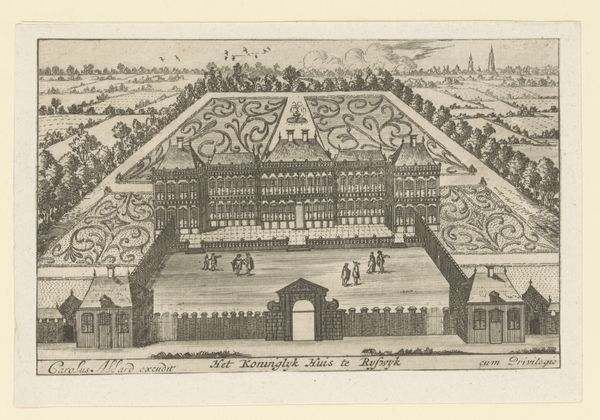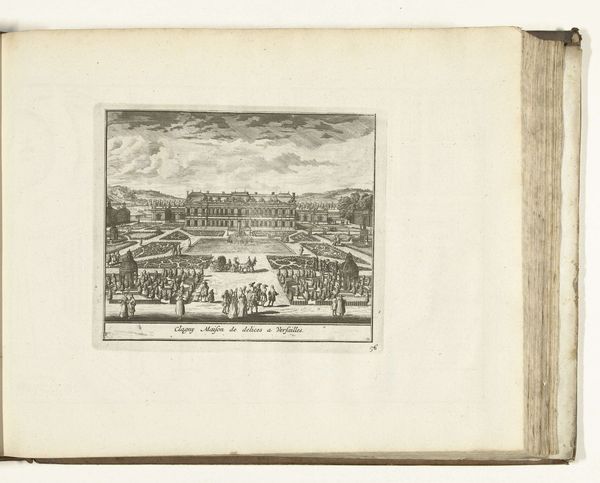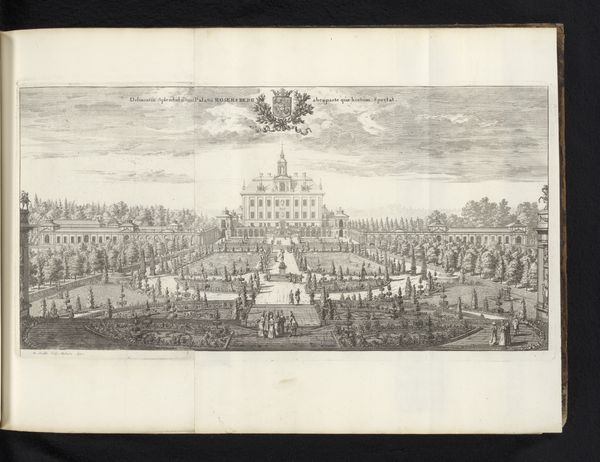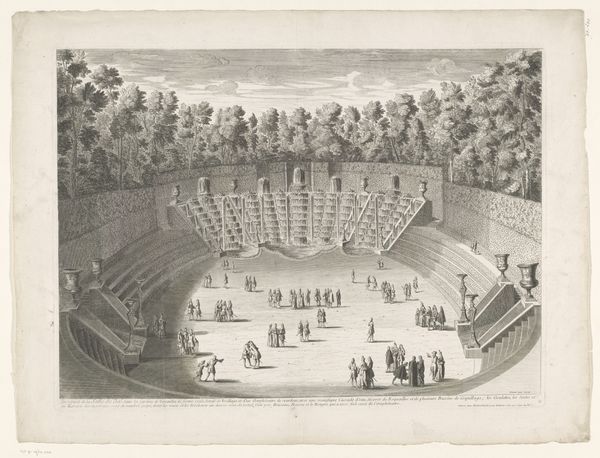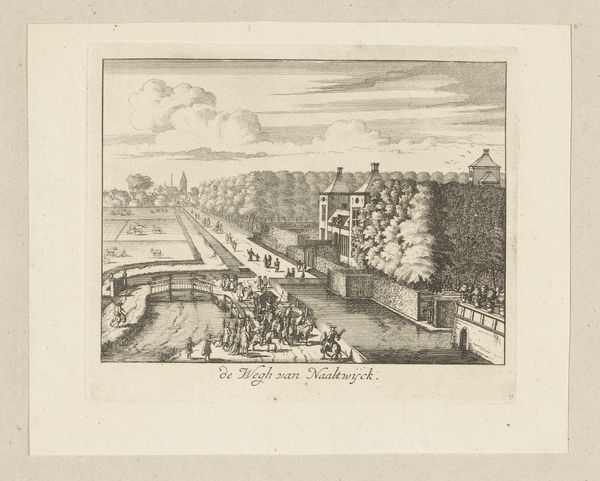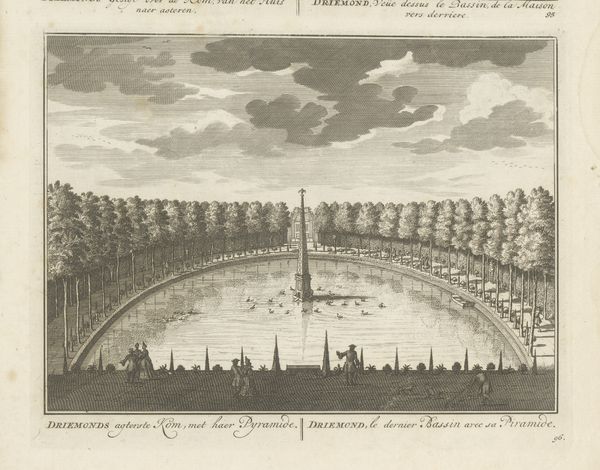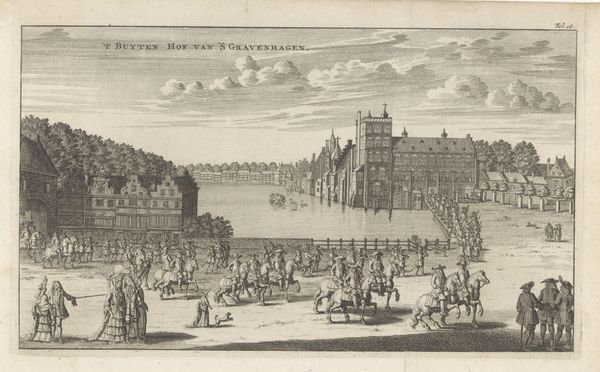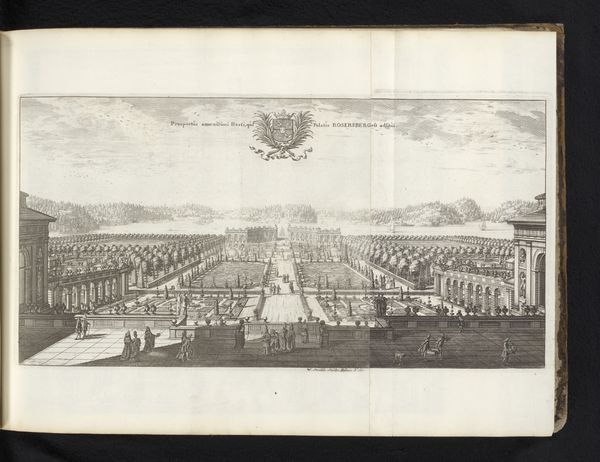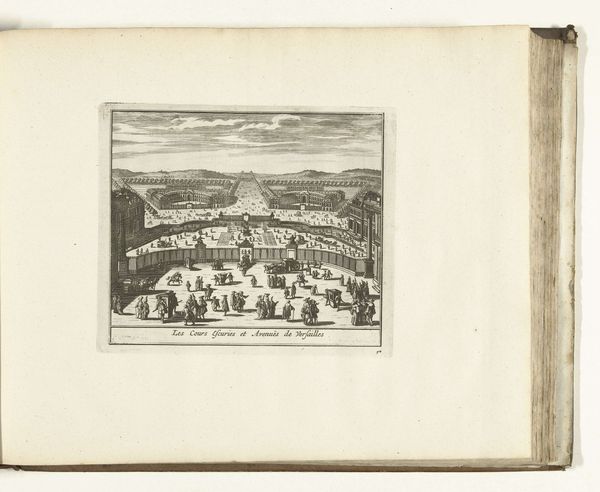
print, paper, engraving
#
baroque
#
ink paper printed
# print
#
old engraving style
#
landscape
#
paper
#
pen-ink sketch
#
cityscape
#
engraving
Dimensions: height 199 mm, width 278 mm
Copyright: Rijks Museum: Open Domain
Editor: Here we have "Gezicht op paleis het Louvre te Parijs, 1726," an anonymous engraving on paper from 1726. It depicts the Louvre Palace in Paris, with people populating a very large plaza. I find the scale of the building and plaza a bit overwhelming. What stands out to you in this piece? Curator: The overwhelming scale, as you say, isn't just aesthetic; it speaks volumes about power structures. Consider the Palace within the burgeoning absolutist regime of France. How does this depiction of urban space reinforce societal hierarchies? Editor: That's an interesting point. It's almost like the people are there to accentuate the palace’s size and grandeur, implying the dominance of the monarchy. But were there criticisms of this type of ostentatious display at the time? Curator: Absolutely. Contemporary social critics, from philosophers to pamphleteers, questioned these displays of wealth amidst widespread poverty. This image, therefore, becomes a document ripe for interrogation: who is being represented, and whose narratives are silenced or marginalized by this portrayal of Parisian life? Think about the function of art like this as propaganda. Editor: Propaganda is a strong word, but it does highlight how the image isn't necessarily neutral. So the print shows not just the Palace but also encodes a message about the power of the state. Is it fair to assume the artist shared those views, or were they simply documenting the space? Curator: That’s the crucial question. Was the artist complicit in glorifying the monarchy, or were they simply reflecting the reality around them, perhaps with subtle critiques we're only now uncovering? Regardless, analyzing the social function of art in that era helps us understand its enduring influence on power and representation. Editor: This makes me see the image not just as a picture of a building but as a cultural statement. It reflects and reinforces certain social dynamics of 18th-century France. Curator: Exactly. It becomes a powerful lens through which to examine issues of class, representation, and the very construction of historical narratives. It is important to explore the power dynamics present in this art.
Comments
No comments
Be the first to comment and join the conversation on the ultimate creative platform.

